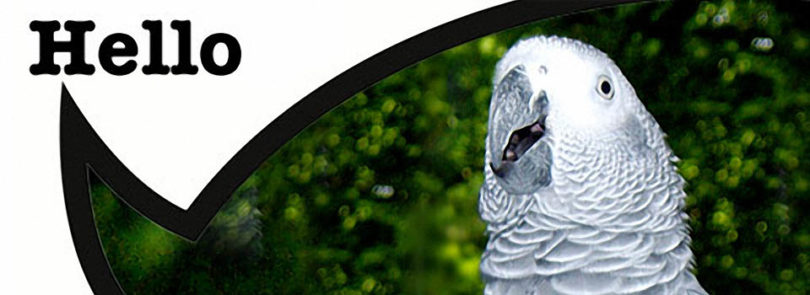New research by UGA scientists has shown, for the first time, that an African Grey parrot can develop a deeper understanding of the sounds-which we hear as words-than researchers previously thought.
Although these parrots have been known for centuries to pet owners as gabby, long-lived companion animals with repertoires of dozens or even hundreds of “words,” this is the first demonstration that it is “…within the abilities of a nonhuman, nonprimate, nonmammal species that has been raised with a responsive human conversational partner in a home rather than a lab to use a variety of speech and nonword sounds in a deliberate, contextually relevant fashion.”
The findings were recently published in the Journal of Comparative Psychology.
“Most of the information we have had about speech in this species of parrot has been anecdotal,” said Erin Colbert-White, a doctoral student in psychology at UGA and lead author of the research. “What we found out in this work, though, is that the speech and nonwords of the bird we studied vary with social context, indicating a level of understanding that goes beyond vocal imitation and approaches functional use.”
Other authors of the paper are Dorothy Fragaszy, professor of psychology, director of UGA’s primate behavior laboratory and chair of the university’s behavioral and brain sciences program; and Michael Covington, associate director of UGA’s Institute for Artificial Intelligence.
The team studied a companion-animal African Grey parrot named Cosmo, which lives with Betty Jean Craige, University Professor of Comparative Literature and director of the Willson Center for Humanities and Arts at UGA. Cosmo is already well-known among parrot-lovers, both for her often hilarious YouTube recordings and as the subject of Craige’s 2010 book Conversations with Cosmo: At Home with an African Grey Parrot.
To study how this works, the team videotaped Cosmo, a female, in four distinct social contexts. In the first context, Craige began recording Cosmo and left her house for the duration of the session. In the second, Craige sat in the room with Cosmo and interacted with her as normal. The third saw Craige in an adjacent room interacting with Cosmo normally by voice. Finally, the fourth context saw Craige and Colbert-White in the same room with Cosmo but reading to each other from online blog entries to simulate dialog and ignoring Cosmo (not interacting with her, making eye contact or any gesturing toward her). Cosmo’s vocal production changed significantly across the four social situations. They also indicated that Cosmo’s “vocal production is largely affected by the presence and responsiveness of the social partners in her environment.”
While the new information about Cosmo’s abilities helps “stress the important role that socialization plays in learning to communicate,” much more study remains, Covington said. “We can’t presume the parrot’s words mean what they would mean in English,” he pointed out. “They sound like human words, and they’re produced in situations where humans would say similar things, but we have to experiment to find out what they actually mean to the parrot.”







